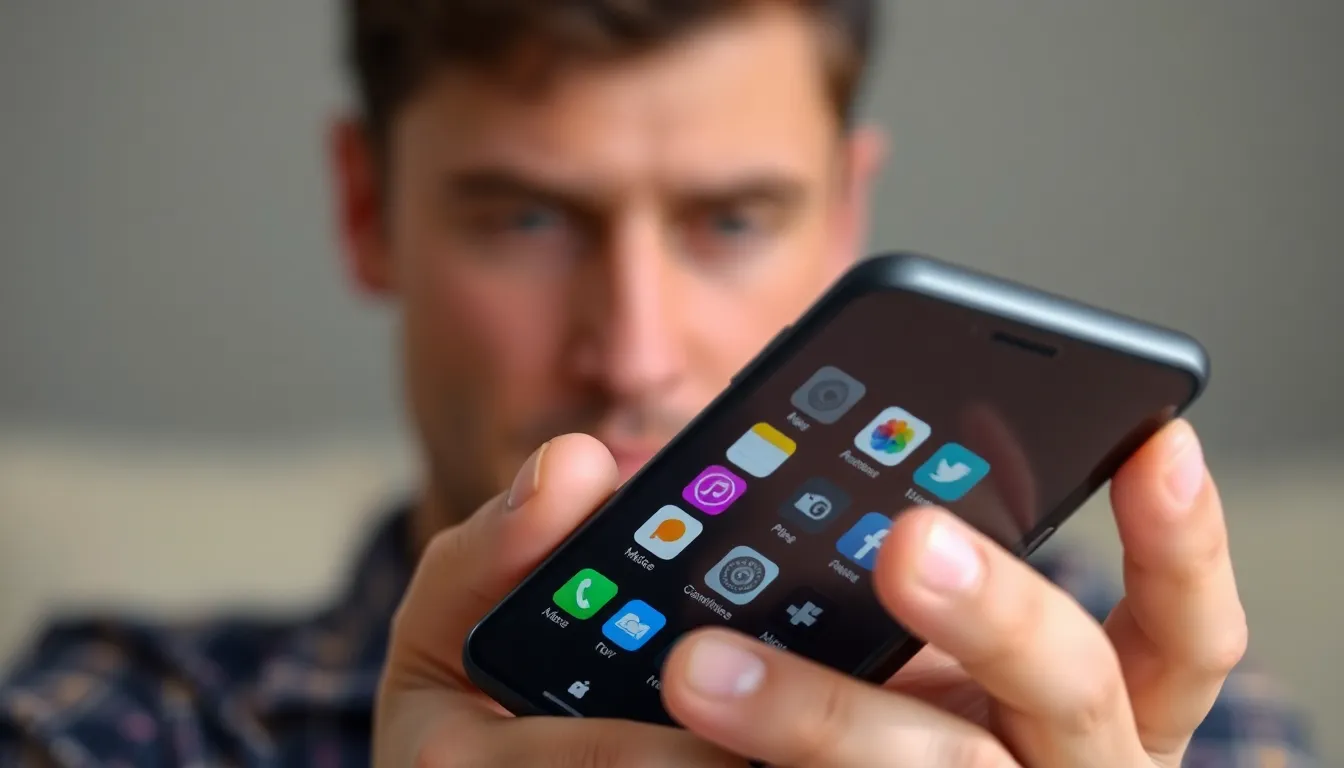Table of Contents
ToggleImagine waking up one day to find your iPhone has a doppelgänger roaming the streets. It sounds like a plot twist from a sci-fi movie, but phone cloning is a real threat that could leave you feeling like you’re living in a bad thriller. If you’ve noticed strange behavior from your device or received mysterious calls from your own number, it’s time to investigate.
Understanding iPhone Cloning
iPhone cloning involves creating an exact replica of an iPhone, allowing unauthorized users to access personal information. This fraudulent activity can lead to identity theft and financial loss. Signs of cloning include unexpected behavior, such as battery drain or altered settings. Receiving calls or messages from one’s own phone number usually signals a potential issue.
Monitoring account activities on iCloud may reveal unfamiliar sign-ins, indicating unauthorized access. The IMEI number, a unique identifier for each device, plays a crucial role in this context. It is essential to verify if someone is using the same IMEI number to access another phone.
Checking for unfamiliar applications on the device serves as another strategy to identify cloning. Cloned phones might show apps or features that were never installed by the owner. Keep watch for unusual pop-up messages or requests for sensitive information, as these can indicate malicious software.
Regularly updating the iOS software helps maintain device security. Software updates often include critical security patches, reducing the risk of vulnerabilities. Resetting the iPhone to factory settings can eliminate unauthorized access but should be approached carefully.
Users benefit from enabling two-factor authentication for Apple ID accounts. This additional layer of security helps verify identity and prevent unauthorized access. Lastly, consulting with Apple Support can provide expert guidance when suspicious activity is detected.
Signs That Your iPhone May Be Cloned

Identifying signs of a cloned iPhone is crucial to protecting personal information. Several indicators may suggest unauthorized access to your device.
Unusual Battery Drain
Battery drain often signals trouble, especially if it occurs unexpectedly. If the battery depletes significantly faster than usual, it may indicate unauthorized apps running in the background. Monitoring battery usage can reveal if specific apps consume excessive power. Restarting the device may temporarily alleviate some drain, yet it’s wise to check usage patterns regularly. This observation allows users to identify unusual trends and take action before potential damage occurs.
Unexpected Data Usage
Unexpected data usage can also raise suspicion about cloning. If data consumption peaks without apparent explanation, it can point to unauthorized activities. Examining data usage statistics in settings may show unfamiliar apps consuming data. Regularly reviewing these metrics helps users maintain awareness of their data plans. Alerts from their carrier about unusual data amounts can provide additional warning. Tracking data patterns can help determine if the iPhone is compromised, prompting further investigation.
Unrecognized Apps or Settings
Unrecognized apps or altered settings often suggest unauthorized access. Discovering unfamiliar applications on the home screen should raise concern, as they may signify cloning. Checking app permissions may reveal apps with access to sensitive information. Changes to settings like privacy configurations can indicate unauthorized manipulation. Regularly reviewing installed applications and settings fosters awareness and security. This vigilance aids users in swiftly recognizing issues related to cloning and protects personal data.
How to Verify If Your iPhone Has Been Cloned
Identifying whether your iPhone has been cloned involves specific checks. Regularly monitoring settings and account activity plays a crucial role in this process.
Checking Device Settings
Begin by inspecting all device settings. Look for unrecognized apps that shouldn’t be on your iPhone. Changes in permissions or settings may indicate unauthorized access. Set up alerts for any alterations in settings. Review notifications, as unfamiliar alerts might signal suspicious activity. Check for unusual unlock patterns or security features that seem off. Additionally, ensuring that the iCloud settings align with your own can reveal inconsistencies. Reassessing your location settings might uncover unexpected changes that don’t align with your usage.
Reviewing Account Activity
Next, validate account activity to catch any cloning signs. Access iCloud account settings and review devices connected to your Apple ID. Any unknown devices should prompt immediate action. Examine recent account activity for unfamiliar logins or changes. Unusual patterns in app usage may suggest that someone else is accessing your information. Monitor email accounts linked to your Apple ID for unexpected notifications. Adjusting your password frequently enhances security and deters unauthorized access. Contacting Apple Support for assistance with unfamiliar activity is crucial for gaining clarity on any irregularities.
Steps to Take If You Suspect Cloning
If there’s any suspicion of iPhone cloning, immediate action is necessary to protect personal information and accounts. Taking the following steps can help mitigate the risks associated with unauthorized access.
Changing Passwords
Changing passwords regularly enhances security. Start with the Apple ID and any linked accounts. Use strong, unique passwords that contain a mix of letters, numbers, and symbols. Enabling two-factor authentication adds another layer of protection. Resetting passwords for email and banking accounts can stop unauthorized access quickly. Consider using a password manager to generate and store complex passwords efficiently. Users should monitor their account login activity for any unfamiliar access following the password change.
Contacting Your Carrier
Contacting your carrier is vital when cloning is suspected. Carriers can monitor phone activity and identify any unusual behavior associated with the account. Inquire about reporting impersonation or unauthorized use of the phone number. They might recommend suspending the service temporarily or issuing a new SIM card. Requesting call logs can provide insight into any suspicious communications. Carrier assistance ensures that all measures are taken to secure the phone number and associated accounts from further breaches.
Conclusion
Being vigilant about the signs of iPhone cloning is essential for safeguarding personal information. Users should take immediate action if they notice anything unusual. Regularly checking device settings and account activity can help detect unauthorized access early.
Implementing strong security measures like two-factor authentication and updating passwords frequently provides an added layer of protection.
If there’s a suspicion of cloning, contacting Apple Support and the carrier is vital for addressing the issue effectively. Staying informed and proactive is the best defense against potential threats in today’s digital landscape.




